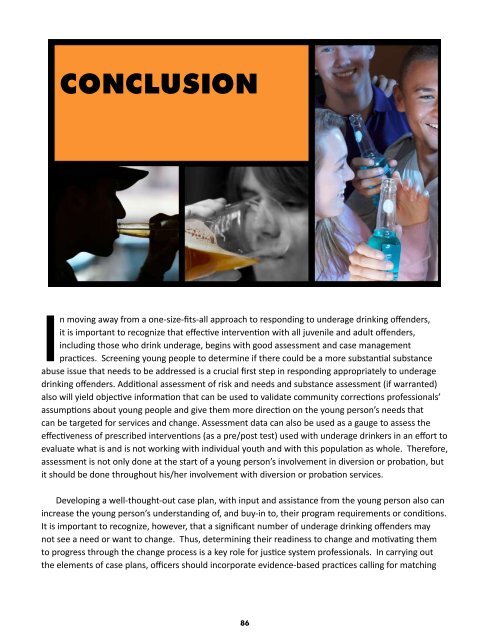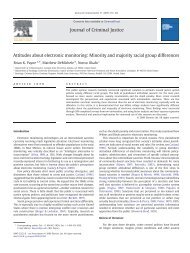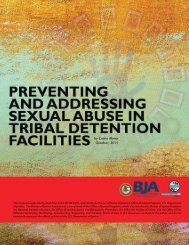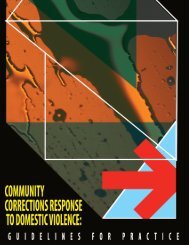Intervention Principles and Practice Guidelines for - Underage ...
Intervention Principles and Practice Guidelines for - Underage ...
Intervention Principles and Practice Guidelines for - Underage ...
You also want an ePaper? Increase the reach of your titles
YUMPU automatically turns print PDFs into web optimized ePapers that Google loves.
CONCLUSION<br />
In moving away from a one-size-fits-all approach to responding to underage drinking offenders,<br />
it is important to recognize that effective intervention with all juvenile <strong>and</strong> adult offenders,<br />
including those who drink underage, begins with good assessment <strong>and</strong> case management<br />
practices. Screening young people to determine if there could be a more substantial substance<br />
abuse issue that needs to be addressed is a crucial first step in responding appropriately to underage<br />
drinking offenders. Additional assessment of risk <strong>and</strong> needs <strong>and</strong> substance assessment (if warranted)<br />
also will yield objective in<strong>for</strong>mation that can be used to validate community corrections professionals’<br />
assumptions about young people <strong>and</strong> give them more direction on the young person’s needs that<br />
can be targeted <strong>for</strong> services <strong>and</strong> change. Assessment data can also be used as a gauge to assess the<br />
effectiveness of prescribed interventions (as a pre/post test) used with underage drinkers in an ef<strong>for</strong>t to<br />
evaluate what is <strong>and</strong> is not working with individual youth <strong>and</strong> with this population as whole. There<strong>for</strong>e,<br />
assessment is not only done at the start of a young person’s involvement in diversion or probation, but<br />
it should be done throughout his/her involvement with diversion or probation services.<br />
Developing a well-thought-out case plan, with input <strong>and</strong> assistance from the young person also can<br />
increase the young person’s underst<strong>and</strong>ing of, <strong>and</strong> buy-in to, their program requirements or conditions.<br />
It is important to recognize, however, that a significant number of underage drinking offenders may<br />
not see a need or want to change. Thus, determining their readiness to change <strong>and</strong> motivating them<br />
to progress through the change process is a key role <strong>for</strong> justice system professionals. In carrying out<br />
the elements of case plans, officers should incorporate evidence-based practices calling <strong>for</strong> matching<br />
86

















